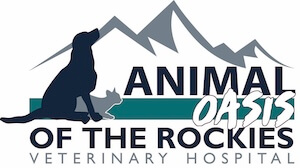Whether we as owners like it or not, thunderstorms can truly be terrifying for dogs. The loud echoes of thunder, sporadic flashes of lightning, and variable shifts in barometric pressure can be enough to send any anxious dog into a state of panic.
If your dog shakes, hides, or shows other signs of fear during storms, you know exactly what we're talking about. However, the good news is that you're not alone, and there are proven strategies that can help. Whether your dog is mildly uneasy or truly storm-phobic, there are steps, like creating a safe space or utilizing behavior therapy and medications, that you can take to ease their distress and help them feel safe.
In this article, we'll share our best tips for keeping your dog calm, cool, and collected no matter how bad the weather outside gets.
Understanding How to Respond to Your Dog's Storm Anxiety
When it comes to storm anxiety in dogs, the way we, as owners, respond to their fear and distress can have a significant impact on both their behavior and mental state. While it's only natural to want to comfort a dog when they're scared, reports from the veterinary community have shown that some forms of appeasement and consoling in the face of a fearful or anxious event can actually result in sensitization to the trigger and subsequent worsening of fearful behaviors.
But let's break that down. If their dog is visibly stressed during a thunderstorm, some owners instinctively use a soothing voice and say things like "It's okay, there's nothing to be scared of," aiming to be reassuring and comforting. While the intention is kind, this consoling tone (often sing-song and high-pitched) can actually confuse your dog and may unintentionally reinforce their fearful behavior or even make it worse. This is because the tone used in these circumstances is contradictory to how the dog is feeling and may make them think that their anxiety or fear is a proper response to the stimuli of the thunderstorm.
Anecdotal evidence has suggested that an owner's calm presence is more effective at calming a dog during a thunderstorm. So, instead of speaking in overly emotional tones, try gentle petting or letting them sit on your lap. Because dogs can confuse the emotional sentiment of your voice when offering verbal reassurance, be sure to reward and praise your dog only when they show signs of calmness or relaxation. This reinforces the behavior you want to see and provides a sense of safety without accidentally encouraging fear.
Key Components of Thunderstorm Phobia Therapy for Dogs
Effective treatment of storm phobia involves four parts: behavioral management, behavior modification, medication, and monitoring.
- Behavioral management means minimizing your dog's exposure to storm triggers and avoiding them completely when possible.
- Behavior modification includes training protocols to encourage calm and relaxed behavior.
- Medication may be necessary for dogs with more intense anxiety. Be sure to only use medications approved by your veterinarian.
- Monitoring ensures that the plan is working and adjusts as needed to maintain progress and keep your dog as calm as possible during thunderstorms or other intense weather events.
When these methods for calming a dog during a thunderstorm are used under the guidance of your veterinarian, you can make real progress in addressing your dog's fear and managing their phobia symptoms more effectively. Each of the tactics on how to calm a dog during thunderstorms will fall under these methods.
Creating a Safe Haven for Your Dog During Stormy Weather
As we discussed above, doing your best to help your dog avoid their anxiety trigger altogether is an effective way to manage your dog's storm anxiety and fearful behavior. Because storms can be unpredictable and hard to avoid entirely, many owners have turned to creating "safe havens" for their dogs to relax in until the weather clears up.

Safe havens are essentially quiet and secure places — that your dog will often choose themself — where they can feel protected from the storm and anxiety-inducing stimuli like wind, rain, or thunder. These spaces can really be anywhere, from bathrooms to closets and even under the bed or in an open crate; the space just needs to be somewhere your dog can feel safe and secure.
Once you and your dog have identified a space for their safe haven, there are a few things you can do or add to it to make it more comfortable, including:
- Adding cozy bedding
- Including a favorite toy or chew
- Placing an item of your clothing in the area for a familiar scent that can add extra comfort
- Closing blinds or curtains to block visual triggers like lightning or rain and provide extra sound-dampening
- Adding noise-dampening features like white noise machines, exhaust fans, or calming classical music
Once you have selected a site and created a comfortable space, make sure your pet has easy access to this location any time of the day or night — it is somewhere you want them to always feel comfortable and safe in, after all. Invite your dog to spend time relaxing and enjoying treats and pets once daily in their safe haven to remind them of the good feelings that occur while there and help them form positive associations with the space.
Reducing Sensory Exposure to Storm Triggers
In addition to using a safe haven to avoid storm anxiety triggers, there are other avoidance tactics that can be used to reduce a dog's ability to detect the presence of a storm.
For sound triggers:
- Use noise-canceling gear like Mutt Muffs
- Place soft foam earplugs in your dog's ears
- Install acoustic tiles in your dog's safe space
- Turn on the TV or white noise machines for sound masking
For visual triggers:
- Close all window shades
- Move to an interior room with no windows
- Consider protective eyewear for dogs, such as Doggles
In addition to visual and sound-blocking tools, there are also wearable items that may help calm dogs during storms. Storm capes are designed based on the Faraday cage concept, which interrupts static electrical charges. However, a placebo-controlled, pseudo-blinded study using client ratings found no difference between dogs wearing a placebo cape and those wearing the actual cape, though both groups showed improvement. This suggests that the added attention alone may offer some benefit.
Wraps like the ThunderShirt or Anxiety Wrap have no known side effects and are often promoted as helpful. These garments apply gentle, consistent pressure across the body, which may help muscles relax. This calming effect may also come from the sensation of being held or massaged, similar to the comfort dogs receive from calm petting. As with the storm cape, it can be difficult to separate the benefit of the wrap itself from the positive effects of human interaction and attention.
What Can I Give My Dog for Anxiety During Storms?
Now, you may be thinking, "What about calming supplements?" While there are a number of products on the market that claim to help calm a dog during a thunderstorm, there are no supplements available that are FDA-approved or have been vetted with thorough scientific research.
There are volumes of anecdotal and testimonial data supporting these products' use and benefits, but none have undergone the rigorous scientific testing needed to prove that these supplements are effective enough to be recommended as a sole or primary therapy to calm a dog during a thunderstorm.
That said, most are considered safe to use as part of a broader anxiety-management plan alongside some of the other anxiety and phobia management techniques we've discussed above. Supplements your veterinarian may recommend to help calm a dog during a thunderstorm can include Zylkene and Solloquin, which should be given well in advance of an expected storm for the best results.
- Zylkene contains a milk protein-derived peptide that acts similarly to GABA (a calming neurotransmitter). It has been shown to reduce stress and anxiety within 90 minutes of administration without causing sedation.
- Solloquin combines several ingredients that promote relaxation:
- L-theanine (encourages calm)
- Tryptophan (a serotonin precursor)
- Magnolia officinalis (anti-anxiety effect)
- Alpha-lactalbumin (calming protein)
In more moderate to severe cases of thunderstorm phobia in dogs, prescription medications may be necessary. These should only be prescribed by your family veterinarian and used following all instructions and warnings. Again, it's important for owners to remember that they are not recommended as a standalone solution for dog storm anxiety but may offer support when used alongside behavioral therapy and other interventions.

Preventing Thunderstorm Phobia from Developing
Now that we've covered the main points on how to calm a dog during a thunderstorm, you may be wondering if there was anything you could have done differently as an owner to stop your dog's thunderstorm phobia from developing in the first place.
Properly caring for your dog is thought to be the most effective method for preventing the development of storm phobias. Helping your dog live a healthy lifestyle and providing them with an enriching environment can lay the groundwork for emotional stability and reduce the likelihood of them developing anxious behaviors or fearful reactions to a number of stimuli.
When it comes to raising a well-adjusted dog, the socialization window (from 3 weeks to 3 months of age) is especially critical. During this time, puppies are more adaptable and less likely to develop phobias when introduced to new sounds, sights, and experiences in a calm and positive way. Avoid exposing puppies to loud or emotionally stressful events — such as storms or painful procedures like spaying or neutering — during their sensitive development period (3–7 months of age), especially if they are confined or restrained at the time. Proper socialization during this stage can significantly reduce the likelihood of storm-related anxiety later in life and save you and your dog a lot of unnecessary stress.
If you have questions and you'd like to reach out to us, you can call us directly at (303) 900-7765, or you can email us at [email protected]. Don't forget to follow us on social media Facebook, Instagram.
